SP programs bridge the gap between theoretical learning and practical application while preparing learners for the unpredictable nature of real-life patient interactions. But as more healthcare educators are turning to virtual and simulation tools, how can you tell if a standardized patient program satisfies the skill-building and curricula requirements for clinical competence?

The Association of Standardized Patient Educators (ASPE) outlines the five domains of best practice to ensure these programs ensure participant safety and simulation effectiveness. Let’s take a closer look at these domains and their influence on standardized patient programs.
Domain #1: Safe Work Environment
The first domain focuses on ensuring that all stakeholders–learners, SP educators, and program instructors–have a safe working environment.
The standards clarify that “safety” extends beyond physical measures to emotional, psychological, and intellectual security. It also involves confidentiality and respect for all simulation participants.
Common components of a safe work environment include:
- Occupational Hazards: Anticipating and recognizing potential occupational hazards, such as allergenic substances, exposure to sharps, air quality, and live defibrillators.
- Privacy Protection: Protecting the privacy of personal information revealed during simulation activities.
- Boundaries: Respecting SPs’ self-identified boundaries, including modesty, physical touch limits, and personal impact. For example, SPs should be protected from re-enacting traumatic experiences to avoid potential re-traumatization.
- Termination Criteria: Informing SPs and clients about criteria and processes for terminating a simulation if it is deemed harmful.
- Informed Decisions: Providing SPs with sufficient information to make informed decisions about their participation in work assignments.
- Compensation Clarity: Ensuring SPs understand their compensation before accepting work, including payment for training and work time, travel & parking expenses, and other forms of compensation.
- Safe learning space: Creating a learning space free from judgment and repercussions where learners are free to make mistakes in a low-stakes environment.
These standards allow all participants to engage in the educational process without fear of harm, which is essential for effective learning and fosters genuine interactions between participants.
Domain #2: Case Development
Case development is the cornerstone of a compelling standardized patient program. SP programs should provide ample practice for clinical and non-clinical soft skills, with a diverse library of scenarios.
Well-prepared cases are based on authentic problems, align with measurable learning objectives, and involve relevant subject matter experts to ensure accuracy. Developers must respect those represented in scenarios, avoiding stereotyping and biases while ensuring sufficient time for drafting, reviewing, and editing materials. Addressing changes from pilot processes before full implementation is crucial for refinement.
Detailed, realistic scenarios are the scaffolding for developing technical and interpersonal skills. Soft skills, like cultural humility and effective communication, can only be learned through human interaction and experience. Comprehensive SP cases include clear goals and objectives, detailed information for SPs, and necessary training resources such as props and videos. They also provide guidelines for feedback, debriefing, and evaluation instruments. This thorough preparation ensures that learners can think critically, consider differential diagnoses, counsel their patients, and even practice the delicate art of delivering bad news.
SP cases mirror real-world challenges in a safe, educational vacuum. Learners develop the skills to handle various clinical and interpersonal situations with competence and grace.
Domain #3: SP Training for Role Portrayal
Authentic patient portrayal is essential to the learning experience. Training SPs to deliver consistent, accurate, and authentic interactions goes beyond memorizing scripts. Well-trained SPs reliably express standardized emotional responses related to their portrayed conditions and roles, even if it’s a medical condition they have never experienced firsthand.
How can programs take SP validity even further? At Simclusive, we believe SPs offer a valuable opportunity to practice clinical competencies alongside cultural competencies. By working with SPs of lived human experiences, interactions are rooted in genuine experience.
In our scenarios, SPs represent their own patient groups. For example, patients with physical disabilities aren’t portrayed by able-bodied SPs, and LGBTQ+ patients are represented by appropriate members of their community. This principle also applies to racial and cultural group members.
Thoughtful attention to detail in case development, SP selection, and training reduces the risk of perpetuating biases and further marginalizing sensitive groups. It also increases the educational benefit for learners and ensures that learner feedback is relatable and accurate. Feedback from humans with lived experience is a powerful tool that learners can reliably and confidently apply to that patient population.
Domain #4: Program Management
Effective program management and design form the foundation of a standardized patient program. Programs need clear, measurable objectives and well-documented policies and procedures. Programs with these attributes will run smoothly and help learners achieve their educational goals.
Well-designed program platforms, like Simclusive’s online, on-demand format, are flexible and improve learner access. Logistical burdens–like scheduling conflicts, physical locality, and SP availability–are effectively minimized.
In keeping with ASPE recruitment and inclusivity standards, Simclusive seeks out diverse and dynamic people nationwide to portray our scenarios. Our virtual platform dissolves geographical borders and enables exposure to patient populations otherwise limited by physical location.
Developing processes to recruit, screen, and maintain a diverse cohort of SPs, establishing safety policies, and advocating for professional development opportunities further support program management. Regular data collection, feedback analysis, and continuous improvement ensure that the program remains effective and aligned with its goals, enhancing the educational benefit for all participants.
Domain #5: Professional Development
The best practice guidelines promote the importance of membership and participation in professional societies (such as ASPE, ASPiH, INACSL, SESAM, and SSH). Active participation in the professional community is crucial for the growth and relevance of SP programs as virtual and simulation training tools rise in popularity. Simclusive proudly promotes the use of SPs to further LGBTQ+ health equality by presenting at conferences like PAEA, ACCME, and ACEHP.
Being up-to-date in learning theories and best practices will continue to enhance the quality and integrity of simulation-based educational tools. Similarly, participation in conferences and educational opportunities demonstrates expertise and spreads awareness of the benefits and availability of SP programs.
Ongoing development and networking efforts will continue to support the role and effectiveness of SP educators in teaching healthcare professionals. Promoting SP methodology, mentoring and supporting SPs and other educators, and advocating for the growth of leadership skills further strengthen professional development. When working with Simclusive SPs, our learners will be confident and competent in providing quality, culturally sensitive care.
At Simclusive, we are invested in the future of healthcare education and have designed our platform, policies, and procedures to align with best practices. We embody the tenets and spirit of the ASPE guidelines by prioritizing a safe work environment, methodical case development, thorough SP recruitment and training, and continuous professional development.
Our SPs and scenarios will guide healthcare professionals in the ways of cultural humility, diversity, and inclusion while meeting stringent educational metrics for competent care. Curious to learn how it works? Connect with an educational strategist!

